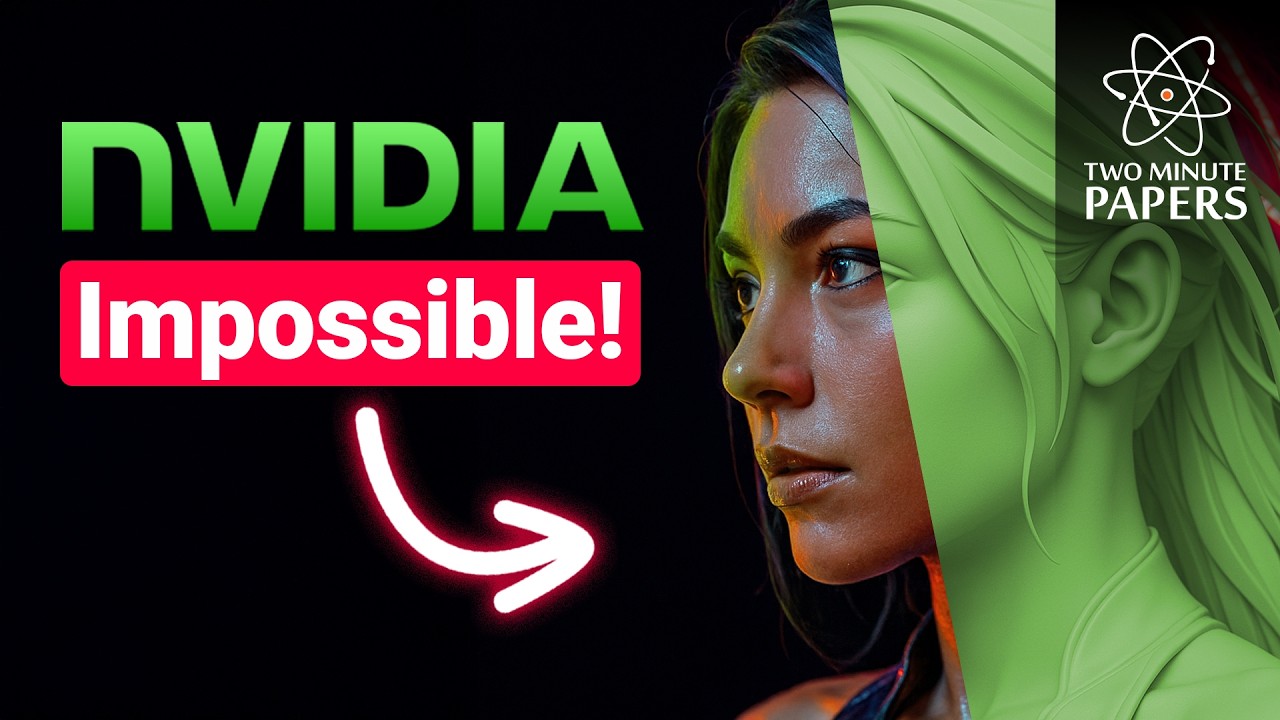The video showcases NVIDIA’s new AI system, GENMO, which can generate realistic 3D character animations from various inputs like videos, prompts, and music, enabling lifelike and versatile virtual movements. Despite current limitations such as lack of facial and hand details, GENMO demonstrates impressive capabilities in transforming real-world footage into detailed animations, promising significant advancements in gaming, entertainment, and digital content creation.
The video introduces NVIDIA’s latest AI technology called GENMO, which significantly advances the field of motion generation and animation. Unlike previous AI systems that focused on text-to-motion, GENMO is described as “everything to motion,” capable of transforming various inputs into realistic 3D character movements. It can learn from recorded videos of people and transfer those motions to virtual characters, converting 2D pixel data into complex 3D joint and limb movements. This capability opens up new possibilities for creating lifelike animations with minimal effort.
The presenter demonstrates the AI’s versatility by adding simple prompts, such as asking a virtual character to perform a lunge or climb invisible stairs, and the AI executes these tasks convincingly. It can incorporate different types of inputs, including music and keyframes, and seamlessly blend multiple motion segments at breakpoints. The system can interpret and transition between various motions, styles, and cues, making the animations appear smooth and natural. This flexibility allows users to generate complex sequences by combining different inputs and editing timings intuitively.
A particularly impressive feature is GENMO’s ability to handle real human dancing and movement from actual video clips. The AI can analyze footage of professional dancers and produce accurate 3D joint movements, surpassing traditional pose estimation methods. The results are remarkably realistic, capturing the nuances of dance styles like cha-cha-cha and even mimicking human gestures convincingly. The AI’s capacity to generate such detailed and lifelike animations from real-world videos marks a significant breakthrough in virtual character animation.
The video also highlights the system’s ability to produce humorous and creative outputs, such as an animated monkey typing on a giant keyboard or acting out playful scenarios. These demonstrations showcase the AI’s robustness and versatility, making it suitable for applications in gaming, virtual worlds, and entertainment. The presenter emphasizes that users can generate animations simply by writing prompts, even in short segments, without needing extensive technical knowledge. This ease of use could revolutionize content creation in digital media and gaming industries.
Finally, the presenter discusses the current limitations of GENMO, including its focus on full-body motion without facial expressions or hand articulation, and its reliance on external SLAM techniques for camera and environment data. While the system uses a heavy diffusion backbone that may not yet support real-time processing, it is close to achieving near-instantaneous results. The video concludes with optimism about future developments, potential open-source releases, and the rapid pace of progress in AI-driven animation, emphasizing that this work is still in its early stages but already highly impressive.
